National Electric Heze Power Plant Desulfurization Flexible Rubber Expansion Joint
Shanghai Songjiang Vibration Absorber Co.,Ltd. specializes in designing a rubber joint product called “Desulfurization Flexible Rubber Expansion Joint” for the National Electric Heze Power Plant. It mainly utilizes Mitsui 4045 EPDM with a content of 50% to ensure quality.
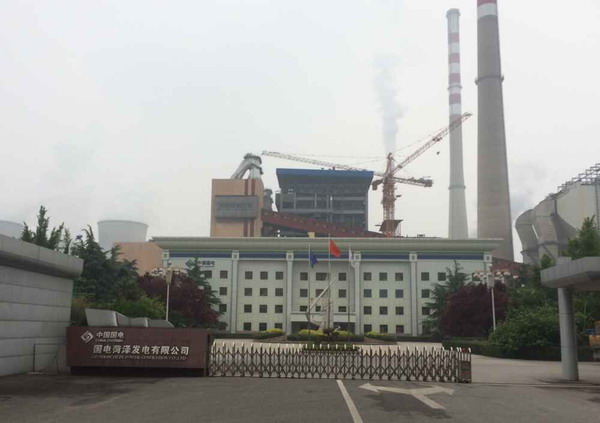
Above are the photos of the engineering team of Shanghai Songjiang Shock Absorber Group Co., Ltd. at the National Electric Heze Power Plant project.
Below are the “Desulfurization Flexible Rubber Expansion Joints” manufactured by Songjiang Group, steadfastly installed at the National Electric Heze Power Plant.
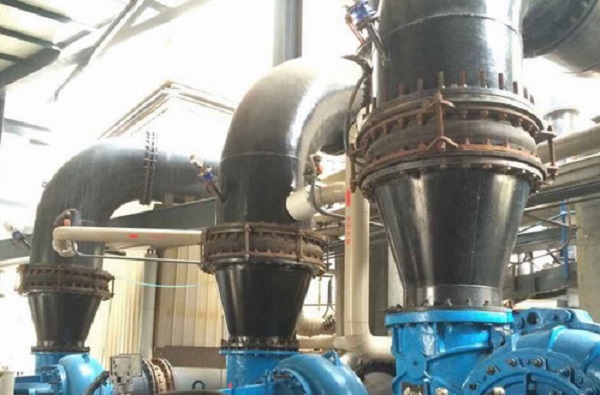
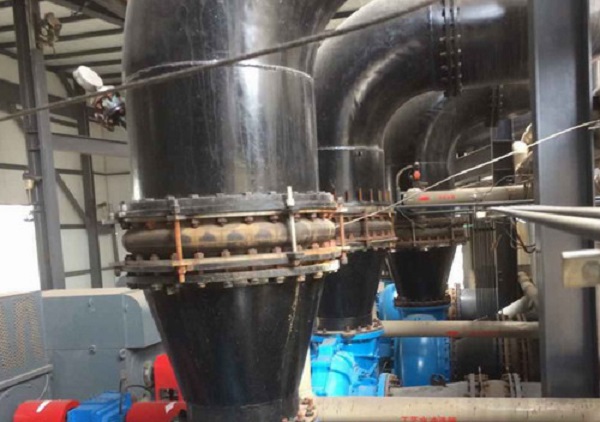
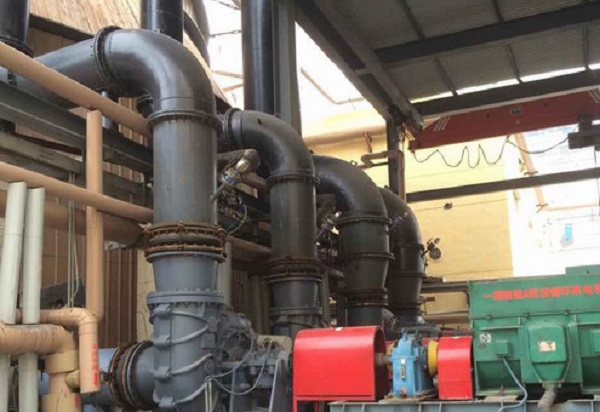
Supply List for Heze Power Plant by Shanghai Songjiang Group:
Name: Desulfurization Rubber Expansion Joint
Rubber Material: EPDM Rubber
Flange Material: Carbon Steel Flange
Mainly used for desulfurization slurry pump inlet and outlet.
Diameters: DN700mm, DN900mm, DN1000mm, DN1100mm, DN1200mm
Technical Requirements for Third-Stage Desulfurization Flexible Rubber Expansion Joints:
1.Technical Requirements:
1.1 The compensator of the flexible expansion joint should be able to absorb all axial and radial displacements of the connected equipment and pipelines under all operating and accident conditions. The compensator should absorb vibrations and prevent vibrations from transmitting along the pipeline.
1.2 All compensators should be designed to be non-damaging and leak-free, capable of withstanding the maximum design positive/negative pressure of the system plus a 100kPa margin, and capable of withstanding the corrosion and wear conditions of the conveyed medium. The internal circulating medium has a density of less than 1220KG/cubic, a particle size of less than 325 mesh (sieve passing), and a pH value between 4.5 and 6.0, mainly containing limestone and gypsum components of desulfurization slurry.
1.3 The main body rubber of the flexible expansion joint compensator is made of wear-resistant, corrosion-resistant, and acid-alkali-resistant natural rubber or EPDM rubber, and an outer layer of material with UV resistance is added. The wear resistance level of the rubber body is above 230. Both the inner and outer layers of the rubber body use canvas, and there are no less than 12 layers of canvas fabric in the entire expansion joint rubber, with a pressure resistance of more than 1.6 MPa. Normal operating temperature is 80 degrees Celsius, and the maximum operating temperature is 120°C. It also has a certain UV resistance capability. The seller should provide relevant information on the structure, material composition, and performance of the compensator, as well as the maximum expansion volume that the compensator can absorb.
1.4 The limiting tie rod of the compensator should have sufficient strength to prevent damage when deformed. The tie rod limiting block and the flange are welded together. Compression filling is performed during installation, and limit adjustment and prevention of excessive stretching are performed after installation.
1.5 The connecting carbon steel flanges are pressure-resistant PN1.6, and the bolt hole spacing dimensions are made according to 0.6MPa to ensure installation dimensions. The manufacturer can conduct on-site surveying and mapping during the technical agreement period. The distance between the bolt holes on both sides must be based on the on-site size. The part of the aperture installation material meets the requirements of on-site installation standards, and the flange of the rubber expansion joint is slightly raised on the outer side by 3-4mm. The bolt holes of the rubber flange are consistent with the flange. During installation, the carbon steel flange is pressed into the rubber flange to prevent the rubber flange from slipping. The rubber flange enhances toughness and strength and is integrated with the main body rubber.
1.6 Rubber joints should be designed to withstand the maximum temperature thermal stress and mechanical stress that the pipeline can withstand when a pipeline failure occurs, including safety margins under worst operating conditions and accident conditions.
2. Regulations, Specifications, and Standards:
2.1 The design, materials, and manufacturing of the compensator shall comply with the current national standards, industry standards, or standards introduced from the importing country. If the technical requirements are in obvious conflict with the above regulations, specifications, and standards, the seller should promptly notify the buyer for written resolution. 2.2.2 During the period from the date of ordering to the date of commencement of manufacture by the seller, the buyer has the right to make supplementary requirements due to changes in regulations, specifications, and standards, and the seller shall comply with these requirements.
3.Quality Assurance:
3.1 The seller shall have a sound quality assurance system and shall submit a comprehensive quality assurance plan with the quotation. The seller shall have dedicated personnel responsible for quality assurance activities.
3.2 The quality assurance plan must clearly specify the following points: a. Inspection and control of the seller’s source of goods; b. Control of technical documents for purchased equipment or materials; c. Control of materials; d. Control of special processes; e. On-site construction supervision.
3.3 The equipment design shall meet the requirements of relevant national standards and specifications and shall fully consider the influence of local environmental conditions and operating conditions.
3.4 The materials used in the equipment shall be high-quality materials that can meet their use conditions, and the selection of components or parts shall be based on the basic principles of technological advancement, maturity, reliability, and durability.
3.5 The seller shall propose construction site installation precautions and installation quality assurance methods.
3.6 The equipment quality warranty period is 1 year, and the compensator’s service life should not be less than 3 years. The warranty period starts from the date when the equipment passes the 168 debugging of the desulfurization project and issues the preliminary acceptance certificate (signing the final acceptance certificate).
3.7 If equipment damage or malfunction occurs due to quality issues within the warranty period, the seller shall repair or replace the equipment free of charge.
3.8 During the warranty period, if the buyer requires on-site service from the seller, the seller’s personnel should promptly attend to the site for assistance.
Product images supplied by Heze Power Plant:

Shanghai Songjiang Vibration Absorber Co.,Ltd. Introduction:
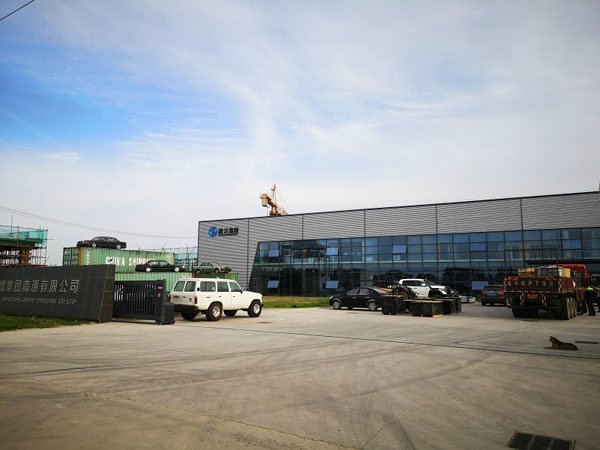
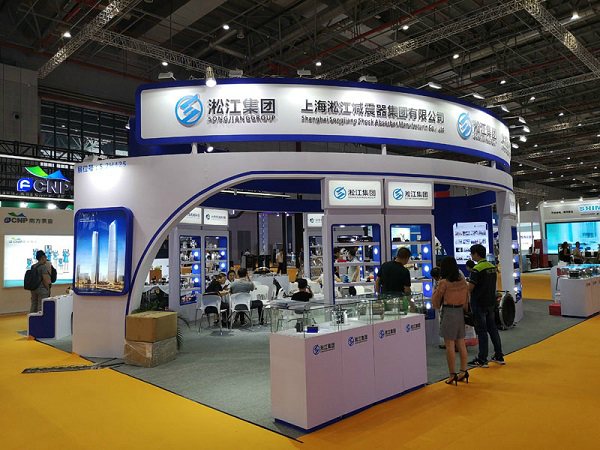
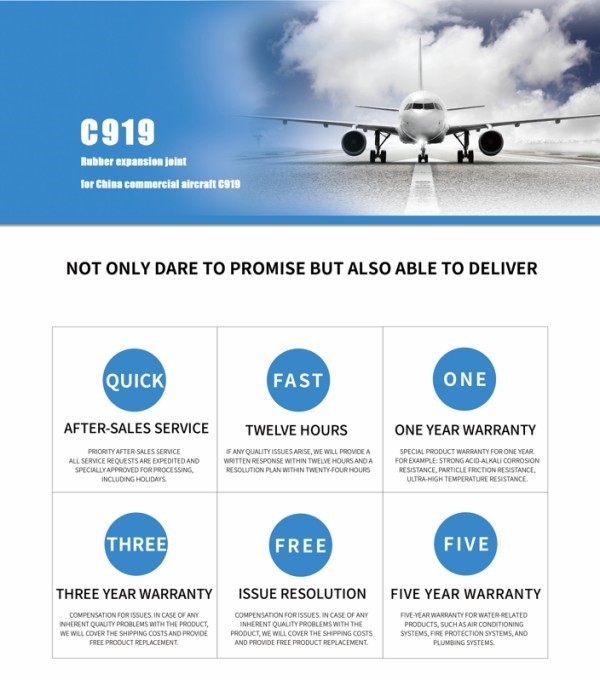
Related links:High-Quality Raw Materials: 100% Natural Rubber










